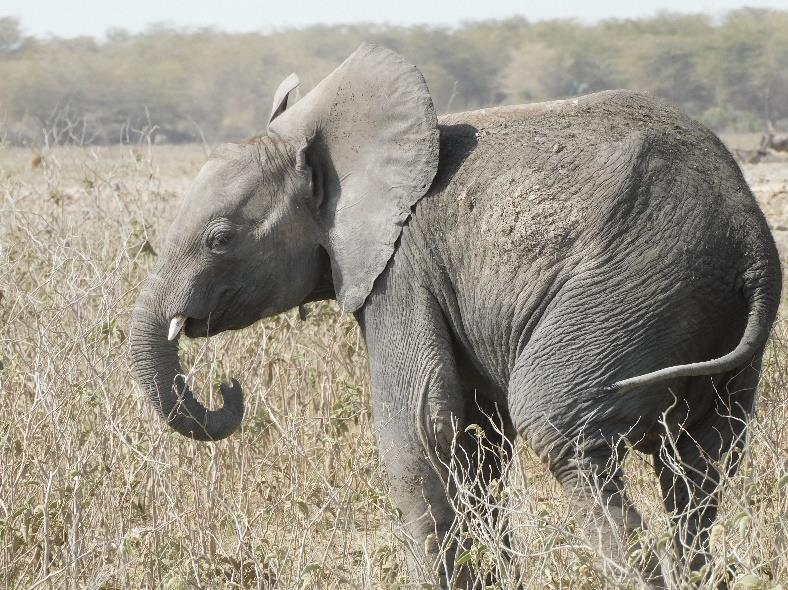


8 Cases in September 3 Poaching Cases


September Report by Dr. Kariuki Edward
1 Elephant Case
Amboseli ecosystem experienced a dry and hot period in September. Vegetation dried off and most grasses, except for stumps of Elephant grass (Pennisetum purpureum), were completely degraded or removed. Weak, old, and young animals were significantly affected by these harsh conditions, and many died of exhaustion and thirst. Forage was very scarce for herbivores, a good number of these animals had to rely on the little vegetation left within the swamps for sustenance.

The Amboseli Mobile Veterinary Unit attended to 8 cases in September, 1 of these cases involved an abandoned elephant calf that was successfully rescued. 3 cases, all involving giraffes, were related to poaching. Additionally, the Amboseli Mobile Veterinary Unit carried out disease surveillance and supported sample collection and collaring for ongoing research on baboons in the Amboseli ecosystem.
Acknowledgement
We thank Sheldrick Wildlife Trust (SWT) for funding the Amboseli Mobile Veterinary Unit We also thank the staff and rangers from SORALO, Kuku, BLF, Eselenkei and Amboseli Elephant Research for their assistance during veterinary interventions Additionally, anyone who may not have been mentioned but supported the monitoring of distressed wildlife is highly appreciated.
Case Details


Giraffe Snared Tinga, Kajiado
The SOLARO team at Tinga reported a giraffe that had a snare around the neck



Immobilisation, examination and treatment
The giraffe was darted with 50mg Azaperone and 14mg Etorphine. The giraffe responded well to the sedative, and it was completely immobilized 15 minutes post darting. The sub adult giraffe maintained stable vitals during the treatment

The neck and general body had not suffered any injury since the wire hung loose. 4 ml Amoxicillin was administered intramuscularly to cover for systemic bacterial infection then Diprenorphine was administered intravenously to reverse anaesthesia.
Prognosis
The giraffe has a good prognosis.
Lion Natural Causes Amboseli National Park

Immobilisation, examination and treatment
The lion was darted with 300mg Ketamine chloride and 6mg Medetomidine. The first dart had little effect since it was probably discharged superficially into the skin. The lion was therefore darted again, and it was completely immobilized 30 minutes after the first dart landed Stable sedation was achieved throughout treatment.

The lion had an injury on the face and a slit on the upper lip. The wounds were cleaned and disinfected then 30ml Amoxicillin was administered intramuscularly to cover for systemic bacterial infection.


Prognosis
The lion was successfully revied, it has a good prognosis for full recovery.
Several Species Disease Surveillance
Amboseli National Park

The Amboseli Mobile Veterinary Unit continued investigating Anthrax cases in Amboseli National Park after positive cases were reported in August. Anthrax is a zoonotic disease caused by spore forming bacteria known as Bacillus anthracis. It is common in herbivores, but it can affect persons exposed to infected tissue and infected animal carcasses. Anthrax is highly fatal; therefore, it is a notifiable disease. Samples collected from carcasses found within the park were processed and examined for Anthrax by smear staining and microscopy.
General Findings
Most animals presented with severe emaciation and pale, dried mucous membranes. Zebras had produced loose faecal material which had a higher number of worms than is naturally normal. Buffaloes, hippos, and wildebeest seemed to have suffered the most. Wildebeests had signs of diarrhoea and exhibited hair matting around the anal opening. Samples from the following carcasses were collected and tested for Anthrax:
Carcass Tested Positive Tested Negative Zebra 0 0 Elephant 0 1 Buffaloes 1 0 Hippos 0 0 Wildebeest 3 2 Total 4 3
Cause of Death
1 Buffalo and 3 wildebeest tested positive for Anthrax. However, all of the animals found dead, including those that tested positive for Anthrax, died from drought related complications.

Giraffe
Arrow Eselenkei
The Big Life Foundation (BLF) team at Eselenkei reported a giraffe that had been shot in the back with 3 arrows.


Immobilisation, examination and treatment


The giraffe was darted with 14mg Etorphine and 50mg Azaperone. It went down in a thicket when the drugs took effect 12 minutes later It took a while for the veterinary team to cut through the bush and secure the animal. This resulted in the giraffe taking a longer duration to recover from anaesthesia.
The 3 arrowheads were carefully removed then the infected wounds were cleaned, disinfected, and covered with Tetracycline wound spray. 60ml Amoxicillin was administered to counter systemic bacterial infections. It took about 45 minutes for the giraffe to fully recover from anaesthesia.
Prognosis
The giraffe has a good prognosis.







